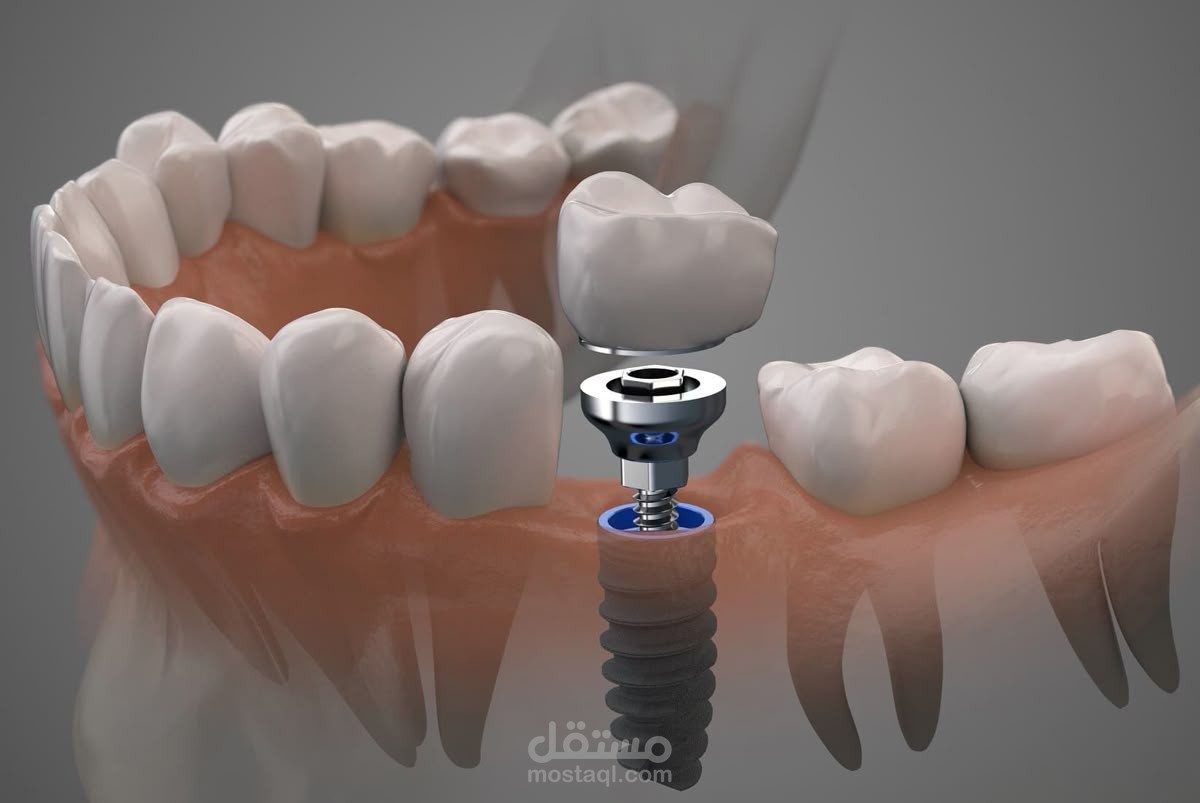Comprehensive Review of Dental Implantology: Biology, Clinical Protocols, Outcomes, and Complications
تفاصيل العمل
Abstract
Dental implants have become a cornerstone of modern restorative dentistry, offering a predictable solution for replacing missing teeth. This review synthesizes current evidence on the biology of osseointegration, implant materials and surface modifications, surgical and prosthetic protocols (including immediate vs. delayed placement/loading), clinical outcomes and long-term survival rates, complications—particularly peri-implant diseases—and maintenance strategies. Emphasis is placed on high-quality systematic reviews, clinical guidelines, and large cohort studies to provide clinicians and researchers with an evidence-based summary. Key findings indicate long-term implant survival rates commonly exceed 90% at ten years, while peri-implantitis remains a significant cause of morbidity requiring multidisciplinary management. Continued emphasis on patient selection, surgical technique, prosthetic planning, and maintenance protocols is essential to optimize outcomes.
Keywords: dental implant, osseointegration, peri-implantitis, implant survival, immediate loading, implant maintenance
1. Introduction
Replacement of missing teeth with dental implants has transformed restorative dentistry and maxillofacial rehabilitation over the past decades. The modern concept of osseointegration introduced by Per-Ingvar Brånemark laid the foundation for predictable implant therapy and fostered widespread clinical adoption across diverse patient populations. Contemporary implantology integrates advances in biomaterials, surface engineering, digital planning, and interdisciplinary treatment planning.
2. Methods (Literature Search Strategy)
A focused literature search was conducted using major biomedical databases with emphasis on systematic reviews, meta-analyses, clinical practice guidelines, and large cohort studies published up to 2025. Search topics included: osseointegration biology, implant materials and surfaces, immediate versus delayed placement/loading, long-term survival and success rates, peri-implant diseases and guidelines for management, and maintenance strategies.
3. Biology of Osseointegration
Osseointegration is defined as the direct structural and functional connection between ordered, living bone and the surface of a load-carrying implant. Successful osseointegration involves a cascade of events: initial blood clot formation, inflammatory cell recruitment, osteogenic cell migration and differentiation, and subsequent bone matrix deposition and remodeling.
4. Implant Materials and Surface Modifications
Titanium and titanium alloys remain the gold standard for endosseous implants due to favorable biocompatibility, mechanical properties, and corrosion resistance. Surface treatments such as grit-blasting, acid-etching, anodization, bioactive coatings, and nanostructuring aim to optimize early bone-implant contact and reduce healing time
